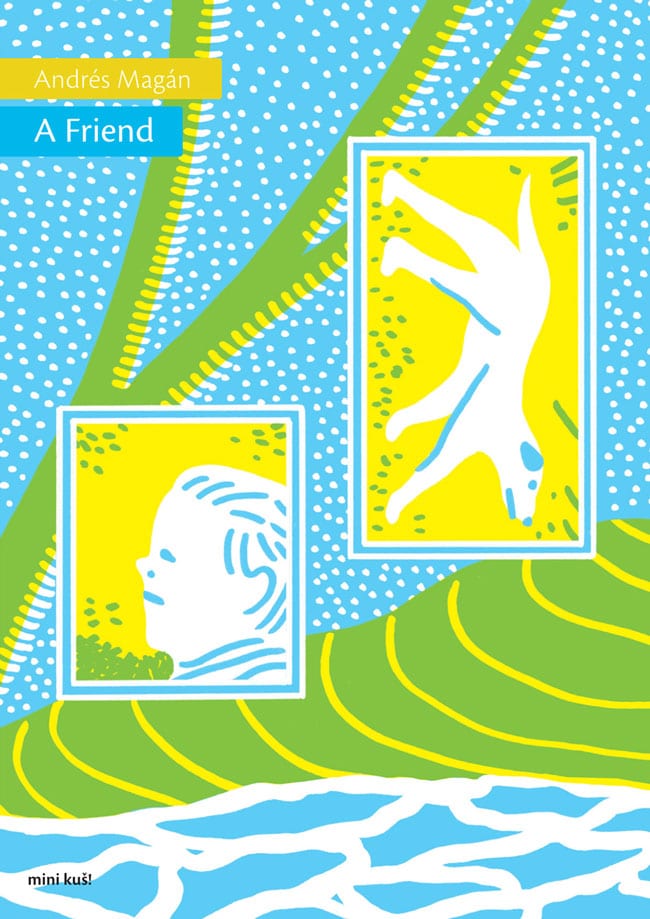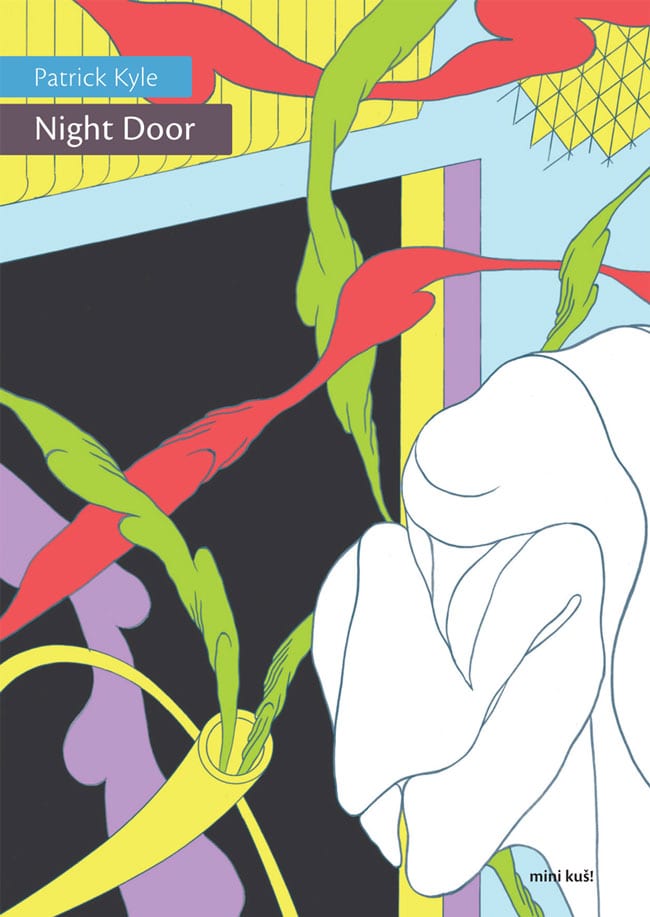The Latvian comics publisher Kuš!, helmed by David Schilter and Sanita Muižniece, celebrated its tenth anniversary this year. From its inception, Kuš! has been dedicated to promoting art comics from international creators with subject matter ranging from light to dark, whimsical to inscrutable, and everything in between. I’ve thought of each new quartet of Kuš! minis as a sort of quasi-anthology and this latest batch genuinely coheres as such: while the comics within wildly vary both tonally and stylistically, all of them traffic in unreliable narration or highlight the subjective nature of reality. All four of these minis underscore what makes this publisher such a unique, exciting, and valuable branch of the indie comics scene.
Valley by GG (#55)
Canadian artist GG, who also has an excellent new book out from Koyama called I'm Not Here, delivers this haunting little tale about a young woman (perhaps GG herself), who, through text messaging, is trying to meet up with friends out in an isolated, craggy terrain called Steam Valley. When she loses connection with them and is left to her own devices in the middle of nowhere, she begins to ask for advice from a talking fumarole (a gaping gaseous maw in the earth's crust). Or is that really happening? Valley, like I’m Not Here, unfolds like a little film, rich in atmosphere. The pale pinks and grays of GG's hyperrealist drawings meld with her sparse narrative to beguiling effect. She is a master of mood, of delineating silent landscapes and lonely, inchoate yearning.

A Friend by Andrés Magán (#56)
Another enigmatic narrative, A Friend unpacks the connection between a man and his missing dog. It opens with the man professing a close relationship with the dog to a park policeman. But we soon begin to question that close relationship. When the man returns home, he finds a rock-shattered window and a note that asks, “Where is your dog?” The story unfolds from there in an unsettling Groundhog Day-like riff, repeating the scenes of the man's conversation with the policeman, the broken window, and his hands bleeding profusely from the glass—but with every iteration producing a different outcome. Magán cleverly repeats page one's image of the park landscape to reset the story and begin again. He wisely keeps his visuals from getting in the way of his somewhat complex story structure, anchoring clean black-and-white line drawings with disparate patches of yellow. Imaginatively conceived and executed, A Friend is one of those classic Kuš! minis that bears a few rereads to tease out different interpretations, on a par with excellent past issues such as Michael Jordan’s This No Place to Stay (#18) and Ingrīda Pičukāne’s Three Sisters (#38).

Eviction by Evangelos Androutsopoulos (#57)
Eviction also features unreliable, incomplete narration, using a secondhand story structure [a memory-piece within a memory-piece]. It begins with a nameless blond man, walking one night past a series of abandoned properties. He remembers another time walking by with a friend, a dark-haired fellow. The friend described meeting a group of squatters there, scab immigrant workers who scrounged up a living, despite having no water or electricity and a scarcity of food. At one point, the dark-haired man’s story shifts narrative voice to one of the squatters, adding to the story’s general sense of dislocation and uncertainty. He tells how the squatters eventually have to physically defend their turf against authorities. Back to the present: the blond man gazes at the property, now devoid of life, permeated with loss. Finland artist Evangelos Androutsopoulos draws his figures and panels with an appealingly posed, almost naïve feel, and his color palate of earth tones interspersed with yellows, oranges and reds has a somber but vibrant quality. As with the other minis discussed here, the narrative is communicated in broad strokes, a reminder that stories passed on from person to person to person take on lives of their own, often losing or accumulating details as they go. As the back-cover synopsis asks: “We hear stories all the time. But are they true?”

Night Door by Patrick Kyle (#58)
Patrick Kyle, like GG, is an artist from the Koyama Press stable. His Distance Mover (2014) and Don't Come in Here (2016) are among my recent favorites from Koyama's backlisted titles (I haven’t yet gotten to his newest, Everywhere Disappeared). Among the key ingredients in Kyle’s comic universe are transmogrifying life forms, elastic spatial properties, and interdimensional travel, all of which feature prominently in the wordless, hyper-surreal Night Door. The story features a weird, dog-like protagonist who is lured into traveling through the titular passageway via a strange tube-like device (which, I have to say, reminds me of Apple-brand earbuds). Naturally, the protagonist’s journey through the passageway is the catalyst for transformation. In the end, we are given a hint that the creature may have been enticed into taking the journey for malevolent purposes–but like everything else in this work, that is left to the reader’s interpretation. Kyle renders the first part of the story in purple-blue ink line drawings on white paper, with the journey itself presented on olive green paper, which deftly suggests an eerie, dark tunnel. On the other side of the passageway, the drawings switch to red ink on white paper. The liminality of Kyle's world is simply but effectively bolstered by these production touches. Night Door fits well into Kyle's already impressive oeuvre.

All in all, these four comics ably represent Kuš! as one of contemporary comics’ premiere outfits for presenting challenging and engaging new work. Happy anniversary and hearty congratulations to Kuš!—and long may you continue to publish.







